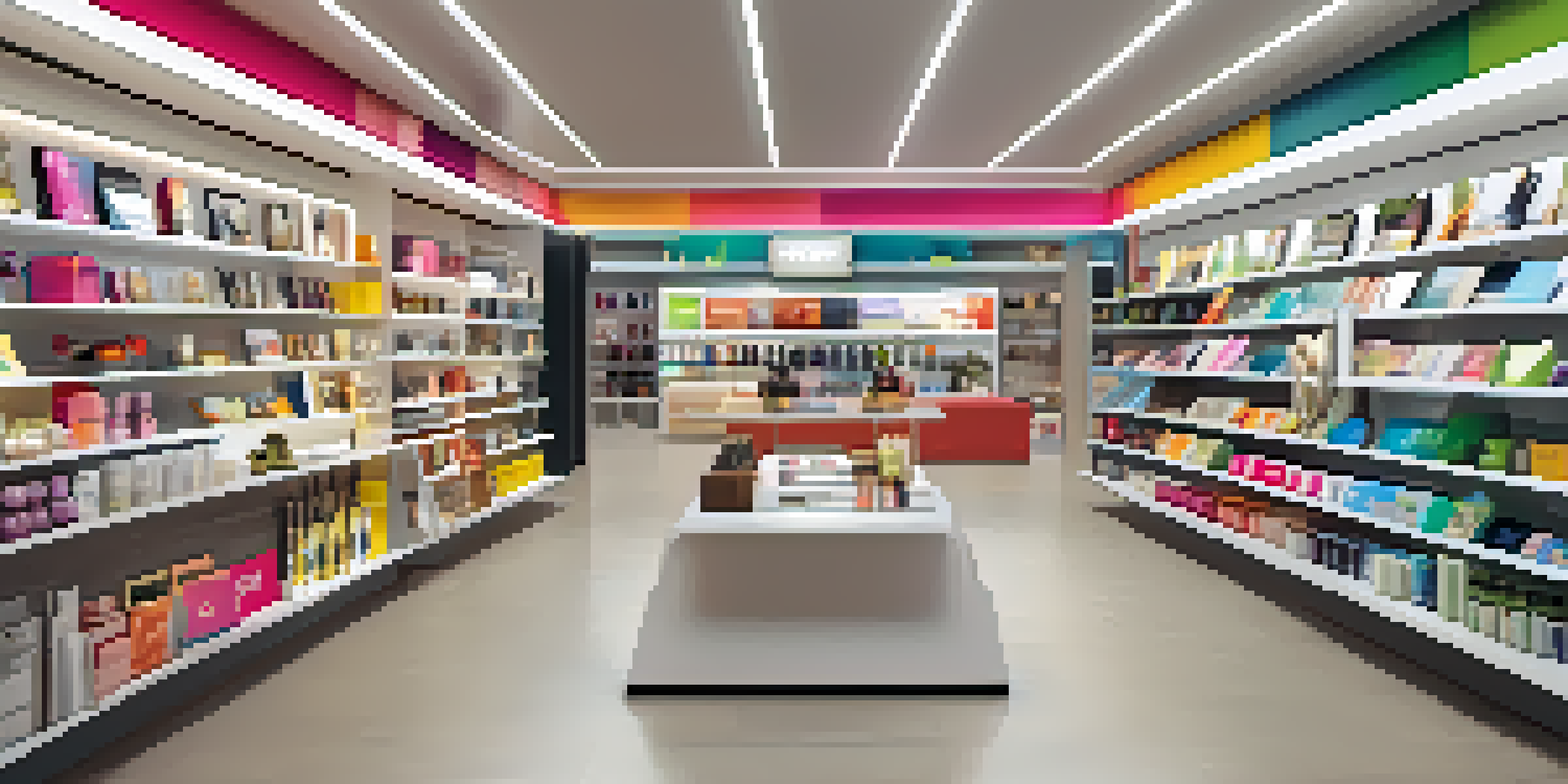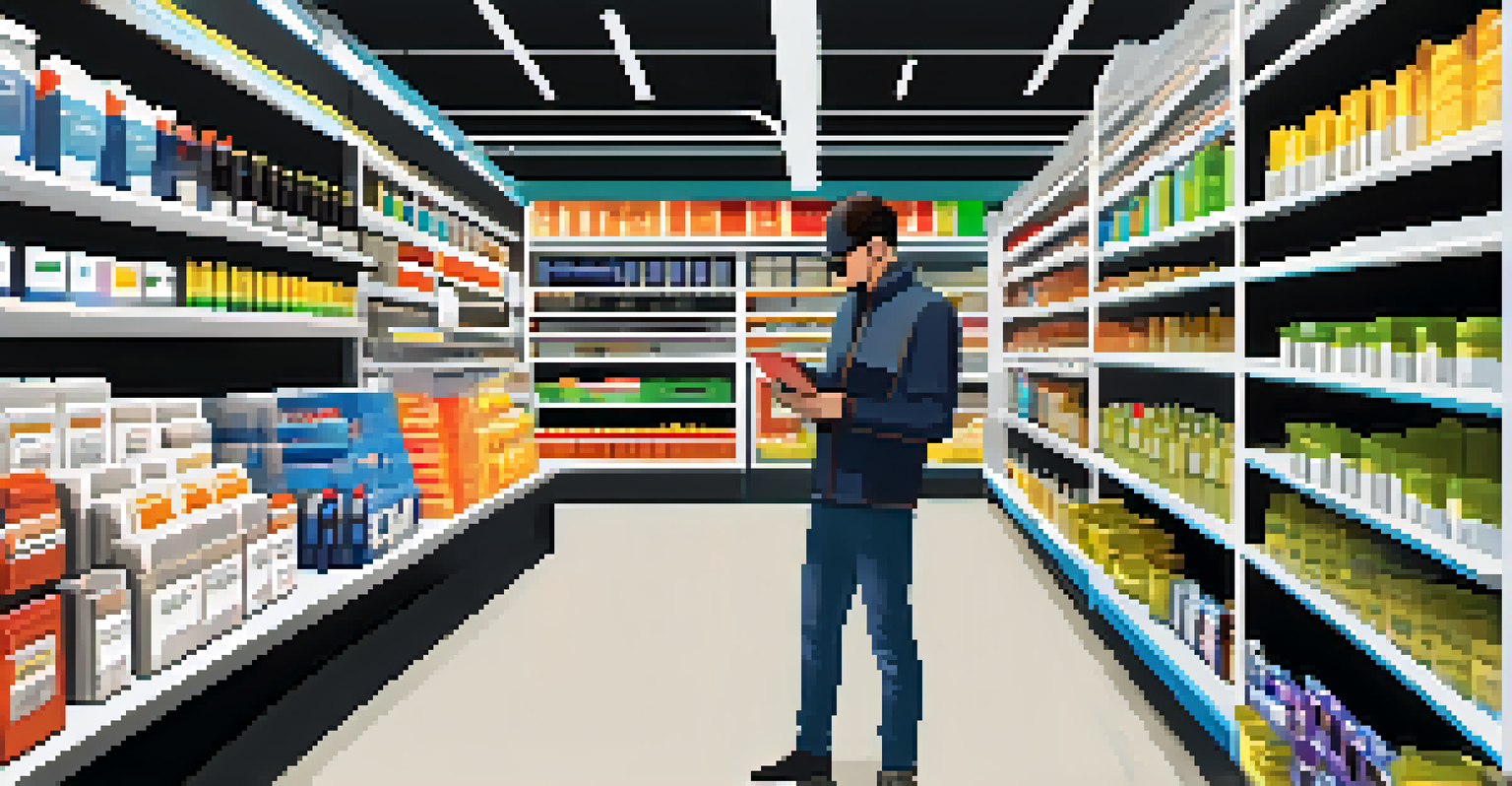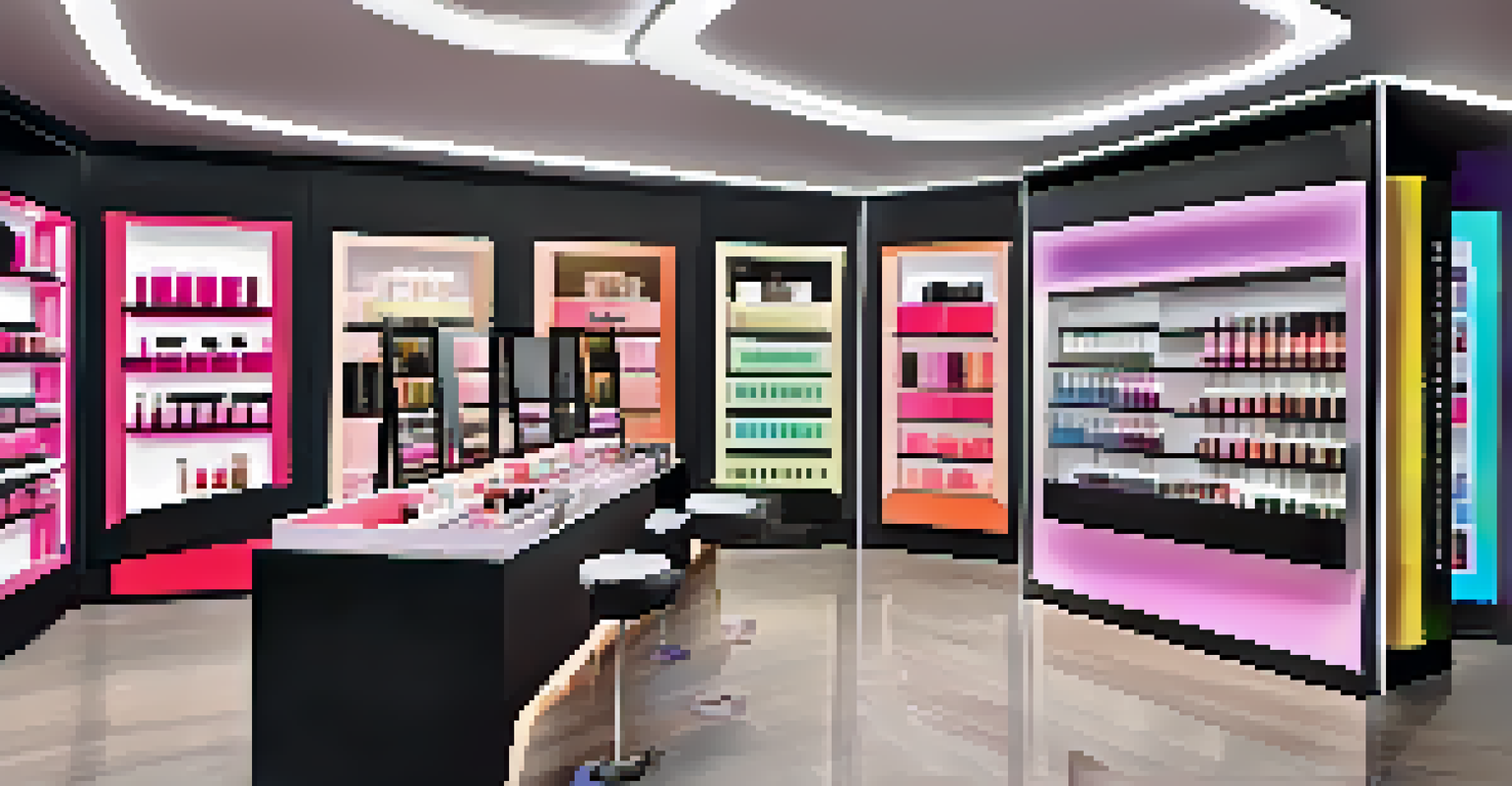The Role of AR in Enhancing Retail Store Layouts

Understanding Augmented Reality in Retail Spaces
Augmented reality (AR) is a technology that overlays digital information onto the real world. In retail, this means enhancing the shopping experience by integrating virtual elements into physical store layouts. Customers can interact with products and displays in a more immersive way, merging the digital shopping experience with the tactile feel of a physical store.
Augmented reality allows us to merge the physical and digital worlds, enhancing the customer journey in ways we never thought possible.
Imagine walking through a store and pointing your smartphone at a product. Instantly, you receive information about its features, reviews, and even styling tips. This interactive element not only makes shopping more engaging but also aids customers in making informed decisions, ultimately boosting sales.
As AR technology continues to evolve, retailers are finding innovative ways to incorporate it into their layouts. From virtual fitting rooms to interactive displays, AR is pushing the boundaries of traditional retail design, creating a more dynamic and customer-centric shopping environment.
Enhancing Product Placement with AR Technology
One of the key benefits of AR in retail is its ability to enhance product placement strategies. Retailers can use AR to visualize how different products will look in various arrangements before committing to a layout. This allows for more strategic placement that can maximize visibility and accessibility for shoppers.

For instance, a furniture store can use AR to let customers see how a sofa fits into their living room space before making a purchase. This not only helps in making better purchasing decisions but also reduces the likelihood of returns, as customers are more confident in their choices.
AR Enhances Retail Shopping Experiences
Augmented reality transforms shopping by merging digital information with physical products, creating more engaging and informative experiences for customers.
By analyzing customer interactions with AR displays, retailers can gather valuable data on shopping behaviors. This data can inform future store layouts, ensuring that products are positioned in a way that optimizes customer flow and enhances overall satisfaction.
Creating Immersive Shopping Experiences with AR
AR technology can transform a mundane shopping trip into an unforgettable experience. Retailers are leveraging AR to create interactive displays that captivate customers, encouraging them to spend more time in-store. Imagine a cosmetics store where you can try on makeup virtually before choosing your shade.
The future of retail is not just about selling products; it's about creating experiences that make customers feel valued and understood.
These immersive experiences not only delight customers but also increase engagement with the brand. A well-designed AR experience can turn a simple shopping trip into an adventure, making customers more likely to return and recommend the store to others.
Moreover, as shoppers become more accustomed to these technologies, they begin to expect them. Retailers that embrace AR are not just enhancing layouts; they are setting new standards for what customers expect from their shopping experiences.
The Role of AR in Personalizing Store Layouts
Personalization is a hot topic in retail, and AR plays a pivotal role in achieving it. By using AR, retailers can tailor the shopping experience to individual preferences, making customers feel valued and understood. This can be done through personalized offers or recommendations based on previous purchases.
For example, a shoe store might use AR to show customers shoes that match their style or previous selections. This level of personalization can significantly enhance customer satisfaction and loyalty, as shoppers feel a deeper connection to the brand.
Personalization Through AR Technology
AR allows retailers to tailor shopping experiences to individual preferences, enhancing customer satisfaction and loyalty.
Additionally, AR can enable retailers to create unique layouts for different customer segments. By analyzing data on shopping habits, stores can adjust their displays and product placements to cater to specific demographics, ensuring that every customer feels catered to.
Streamlining Inventory Management with AR
AR isn't just about enhancing customer experiences; it can also streamline inventory management in retail environments. By using AR technology, store employees can quickly locate products, check stock levels, and even receive alerts when items need restocking. This efficiency reduces wait times for customers and ensures that popular products are readily available.
Imagine a scenario where an employee scans a shelf with AR glasses, receiving immediate feedback on which items are low in stock. This real-time data empowers staff to make informed decisions, keeping the store well-organized and shoppers happy.
Furthermore, AR can assist in visualizing inventory in the backroom, allowing for better organization and quicker access. By optimizing inventory management with AR, retailers can focus more on providing excellent service rather than being bogged down by logistical issues.
AR as a Tool for Staff Training and Engagement
Training retail staff can be a daunting task, but AR offers an innovative solution. With AR, new employees can engage in interactive training sessions that simulate real-world scenarios, making the learning process more effective. This hands-on approach helps staff learn about products and customer service in an engaging way.
For example, staff can use AR to practice customer interactions or familiarize themselves with the store layout before they even step foot on the sales floor. This not only accelerates the training process but also builds confidence in new hires, leading to better customer service.
AR Streamlines Inventory Management
Using AR technology, retailers can efficiently manage inventory, reducing wait times and ensuring product availability for customers.
Moreover, ongoing training can be facilitated through AR, with staff accessing updates on new products or procedures in real-time. This ensures that employees are always informed and equipped to provide the best shopping experience for customers.
The Future of Retail Layouts Enhanced by AR
As we look to the future, the role of AR in retail store layouts is set to expand even further. With advancements in technology, we can anticipate even more sophisticated applications of AR that will redefine the shopping experience. Retailers will continue to innovate, finding new ways to integrate AR into their designs.
For instance, we might see AR environments that evolve based on customer interactions, creating a dynamic shopping experience that changes with each visit. This adaptability could revolutionize how stores approach layout design, making them more responsive to customer needs.

Ultimately, the integration of AR in retail is not just a trend; it's a glimpse into the future of shopping. As retailers embrace this technology, they are likely to create more engaging, personalized, and efficient shopping environments that keep customers coming back for more.